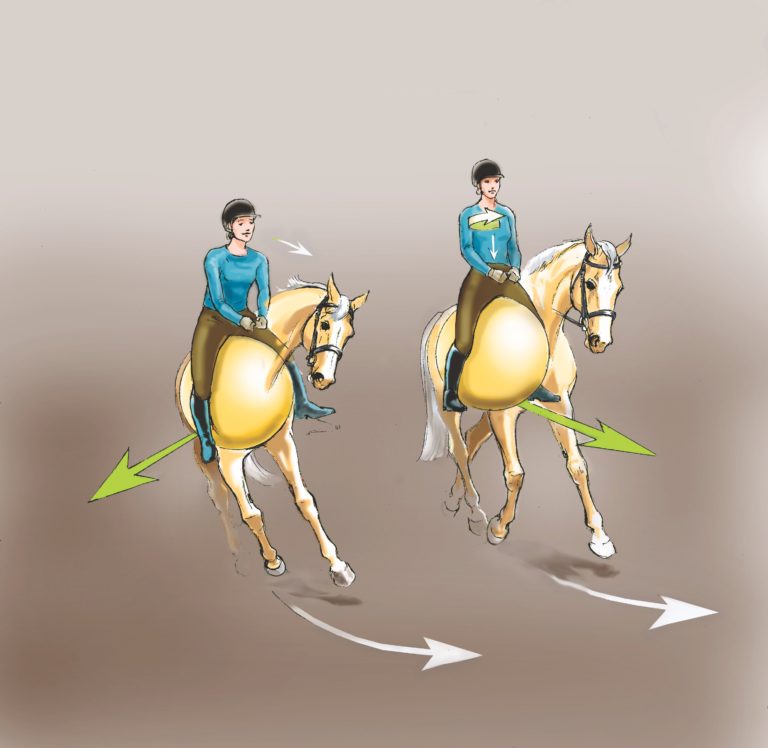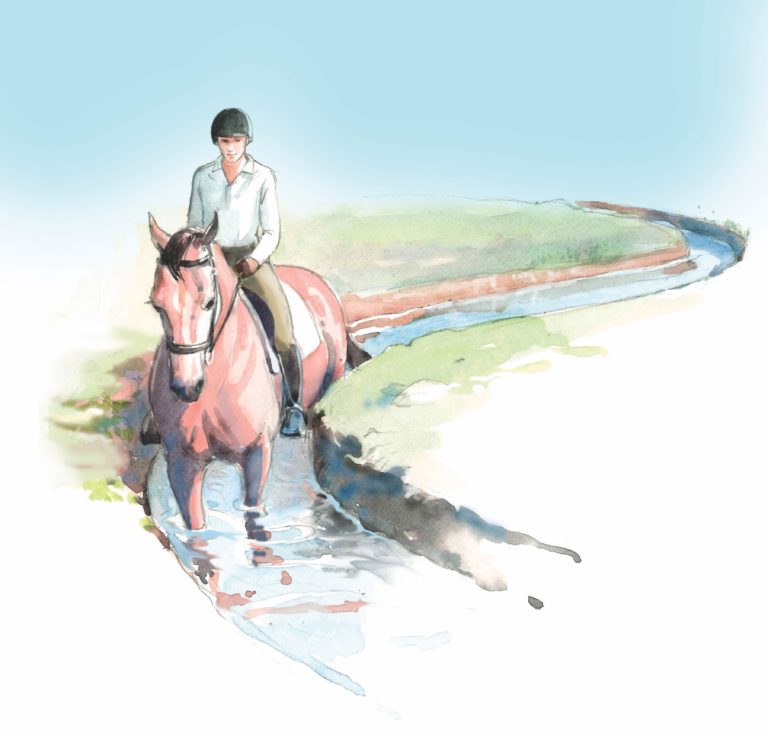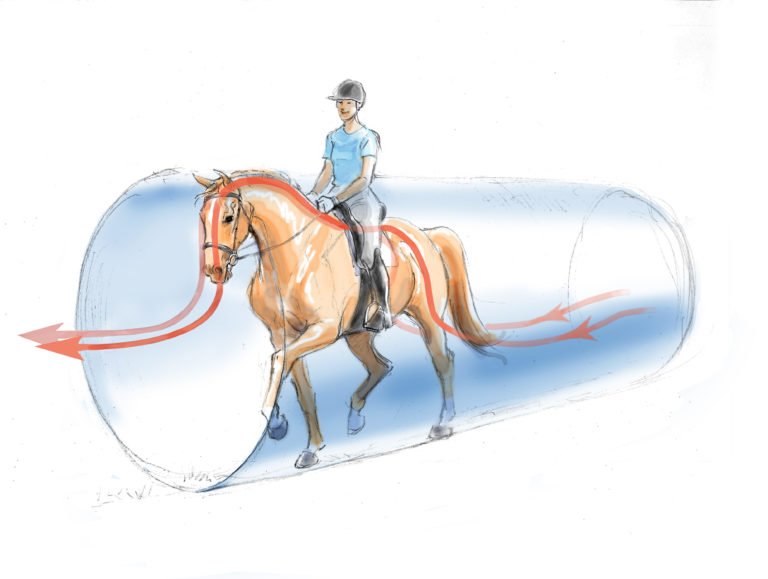For many years I have been interested in the personalities of horses, and I know that every equine enthusiast is interested in the temperament of horses to a certain extent. People describe their horses’ personalities to me all the time without even realizing it.
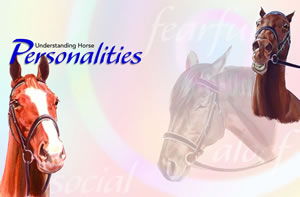
As an Amazon Associate, Dressage Today may earn an affiliate commission when you buy through links on our site. Products links are selected by Dressage Today editors.
They say things like, “My horse is very bossy with other horses” or “My horse is afraid of anything new” or “My horse doesn’t pay attention to me at all.” These kinds of comments and observations are key in defining and understanding the behavior of any horse. Upon further examination, these same observations will lead you toward the most effective way to handle, ride and train your equine partner based on his basic temperament.
My goal in this series of articles is to share insights that may help you better understand your horse, yourself and the other horse people that you interact with regularly. In part two, I’ll give you examples of mixed personality types and how to train them. In part three, you’ll learn about human personality types from a colleague of mine who specializes in such things. Knowing our own preferences helps us have better relationships with both humans and equines. In part four, I’ll give more examples of how to find the best match for your type and how this also works for choosing the right instructor.
Understanding the personality of your horse, coupled with knowledge about your own temperament and skill level, gives us the best chance for success in our daily rides. We want to be paired with a horse whose natural behavior patterns allow us to stay within our own natural comfort zones as much as possible.
Four Basic Personality Types
It can be argued that temperament is just as important as gaits, breeding and conformation when assessing the horse you already own or one you are thinking of buying. Studying a horse’s personality type can help you understand his behavior patterns and comfort level, which helps you organize a good training program. But, of course, the study of equine personalities is done “in addition to” and not “instead of” the other riding and training issues we all gamely struggle with regularly. It’s just one more tool that can lead us toward a better understanding and handling of our equine friends.
As I see it, there are four basic, clearly discernable personality groupings, which I call social, fearful, aloof and challenging.
The social horse is quite interactive and interested in the world around him. Social horses are the official greeters of the horse world. Even as youngsters, this type usually likes being petted and made a fuss over. They often enjoy playing with other horses throughout their lives. Social horses are the most likely to welcome you into their personal space, and they may be quite happy to invade yours. Social horses may struggle with their attention spans when they are young just because the world is so interesting to them. Overall, social horses, especially the more passive ones, can be very rewarding to own and easy to train. This type is usually more tolerant of poor handling than the other types.
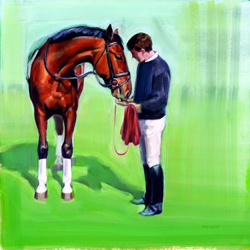
The fearful horse is much more guarded and cautious than his social counterpart, especially when young. He often needs more personal space and may become claustrophobic or panicky when confined or restrained. Not usually at ease in new situations or environments, he often has strong, quick or reflexive-type reactions to stimulus or aids and can be described as over-reactive. He is more “flight” than “fight” oriented. He usually gets all or most of his confidence from a person or another horse he has bonded with. Once trained, fearful horses usually make strong efforts to comply and often have a long and focused attention span.

The aloof horse is not particularly interactive. Content to be in his own little world, he often seems independent of both people and horses. He may have a delayed or dull reaction to stimulus or aids and is usually more tolerant than welcoming of intrusion into his personal space. During training, the aloof horse must learn to interact and focus on lessons. This type often appears to deliberately shut out all forms of stimuli by ignoring or “tuning out” present circumstances. Owners of aloof horses will often note a rather glazed or removed look in their eyes. The aloof horse tolerates poor handling better than a fearful or challenging type.
The challenging horse has a strong sense of self and may seem prideful or arrogant, especially when young or still entire. Usually guarded and somewhat territorial about his personal space, he is also frequently confrontational about aids or any form of stimulus. Often confident, a challenging horse is prone to opportunistic behavior and may exploit timid or inexperienced riders and so needs constant clarification of his place in the social order of the horse-and-trainer relationship. A challenging type is usually near the top of the pecking order of his herd and may quickly become a bully if given the chance. Challenging types are often strong, brave performers with a certain charisma.

Some horses show discernable traits from two of the personality groupings. You can do the math and figure out all of the variations that are possible. Remember that regardless of temperament you must always deal with the behavior that your horse presents: If he is distant and removed, you need to get his attention; if he is confrontational, you need to establish your authority; if he is distracted and inattentive, he needs to pay attention and respond to you; if he is worried and mistrustful, he needs to be reassured. So, the name of the game is to pay close attention to your horse!
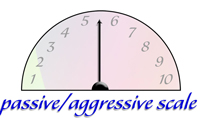
The Passive-to-Aggressive Factor Within Each Type
In addition to knowing a horse’s personality type, it is important to understand the passive-to-aggressive variations within each type. While people are referred to as either introverted or extroverted (according to Jungian psychology), the closest similarity in horses is passive or aggressive. If you picture each of the personality types and then think about turning the volume of that particular personality either all the way up or all the way down, you would not be far off. I like to think of a scale from one to 10, with a very passive horse being a one and a very aggressive horse a 10. Most horses fall somewhere between these numbers. Here are some examples to clarify this concept:
- A passively fearful horse, while somewhat guarded and insecure, is vastly different from his panicky and hair-trigger counterpart, the aggressively fearful horse, who might come unglued at the drop of a hat.
- A passively challenging horse that might pin his ears and scowl at a request before complying is quite different from the aggressively challenging type’s direct confrontation or blatant and threatening misbehavior.
- A passively aloof horse might be a little bit slow or dull about responding to a request, while an aggressively aloof horse might studiously ignore or tune you out, while appearing to pay very close attention to nothing at all.
- The passively social horse is peacefully interested in his surroundings, while an aggressively social horse is usually a noisy and fun-loving busybody interested in his surroundings well past the point of distraction.
Putting It All Together
Here is an example of how my husband, Kim, and I use all this information. When we receive a horse for training, we spend whatever time it takes to assess his personality and training issues. Often, we put him in a round pen and observe the horse in freedom. If he immediately approaches us in an interested fashion, looking for interaction, we suspect he is a social type. If he acts flighty and worried and starts whinnying frantically, we are thinking “fearful.” If he wheels and kicks when we first turn him loose or displays any threatening behavior, we suspect he is “challenging.” If he shows little interest in any interactions or his environment, we are thinking “aloof.”
Next, we apply a little pressure. We may crowd the horse a little bit and watch his response. We may make a sudden or threatening movement on our own and see what happens. Usually within five to 10 minutes we have a good idea about what we have to handle and where this horse might fall on the passive/aggressive (P/A) scale.
We still have to do the riding evaluation (if the horse is started) to determine any training issues but, because of our earlier assessment, we already know what type we have to work with.
Once we are fairly certain of the basic temperament, we instruct our working students about how best to handle this horse. Social horses are usually easy. Mostly we tell our students not to spoil them too badly.
Fearful horses need patience and slow reassuring routines, preferably with minimum change of handlers.
Aloof horses need to interact more, and so they will get extra snacks or attention until we see them begin to look out over the door a little more and get more involved in their world.
Challenging types need to be fairly but, at times, firmly handled. These horses also will usually be assigned to just one individual who is not easily intimidated and will pay attention to and deal with any minor infractions when the challenging horse steps out of bounds.
Our goal of handling each horse according to his personality means that they all learn to interact, relax, obey and pay attention. This starts in the barn and carries through to longeing, loading, riding and showing.
Understanding personalities has helped us effectively handle stallions for years. At any given time, we can have between 10 and 15 stallions in training and, other than the fact that the stallions are usually higher on the passive/aggressive scale than their gelded counterparts, they all must be treated according to their individual personality type and then trained accordingly. Aggressively challenging or aggressively fearful stallions always need to be handled carefully and often do not make good competition horses.
This has been a brief introduction, but my hope is that these ideas spark an interest, which will lead you toward many more questions about type. In part 2), I will outline the mixed personalities, I’ll show you how to work with them and I’ll give lots of examples.
Determine Your Horse’s Type
By now, you may be starting to recognize your horse’s personality type. But, to objectively assess this, you need to observe his behavior closely and then correctly categorize the information you gather. Take a pencil and paper to the barn and sit where he can’t see you watching him. Begin your evaluation in the barn and then watch him during turnout. Watch how he behaves on his own and with other horses. Ask someone he doesn’t know to handle him, and see how he reacts. Then, take him to an unfamiliar environment and note his behavior.
You’re looking for interactions that are unique to each of the four personality types. For example, a well-trained, moderately challenging horse may be very obedient and quick to respond to your request when you try him at a sale barn. However, when this same horse comes into a new environment and starts testing his boundaries and his handlers (as challenging types are prone to do), he may develop some different behavior patterns if he is not handled appropriately. The horse you originally pegged as “very obedient” might start testing your authority.
In your observations, be sure to study behaviors without attaching emotion or giving any excuses for them. Here’s another example: A sale horse is brought into the barn aisle. The handler seems intent on constantly reassuring this horse who looks rather twitchy and unsettled. The term “moderately fearful” should already be entering your mind. When you ask how long this horse has lived at the barn, the answer is three months. This horse should be more settled, unless he is receiving rough treatment from someone. Even so, you should still be thinking “fearful” and about 6 to 7 on the passive/aggressive scale, while you wait for more information.
As someone makes a noisy entrance into the barn, the horse startles and stares transfixed at the newcomer (still fearful behavior). The handler starts talking about this and that and how “Sparky” always likes to look at anything new. Remember “looking” implies the horse is interested. Starting gives the impression of worry or fear. Keep watching the horse.
You ask if he goes out in a field or paddock. The handler says, “Yes,” and that he is attached to “Raindrop” and always gets turned out with his friend. You ask to see him turned out alone. Upon being turned loose, Sparky runs frantically up and down the fence line calling for his friend. He will not settle. This horse is a 6 to 8 fearful type. At that point, you must decide if you are talented, patient and motivated enough to make a relationship with him successful. Keep in mind that you haven’t even seen this horse work yet! He may have great gaits and he may also be fairly well trained, but if he is this worried in his home environment, how will he behave at your place, at a horse show or in a clinic? Unless you have the skill to reassure this horse and still get some good work out of him, you may want to think twice.
Yvonne Barteau is a U.S. Dressage Federation bronze, silver and gold medalist and a popular clinician and freestyle rider. Currently, she competes Liberty, a Dutch Warmblood stallion, at Grand Prix and Raymeister, a Holsteiner stallion, at First and Second levels. She and her husband, Kim, run KYB Dressage at Indian Hills Training Center in Gilberts, Ill. The couple spent 10 years at the Arabian Nights dinner theatre in Orlando, Fla., where they trained horses and performed in the show. The parents of four children, their daughter, Kassandra, won the 2007 National Young Rider Championship at Gladstone, N.J. Yvonne’s book, Ride the Right Horse, is published by Storey Books and available from Amazon.
This article was originally published in the September 2007 issue of Dressage Today magazine.


